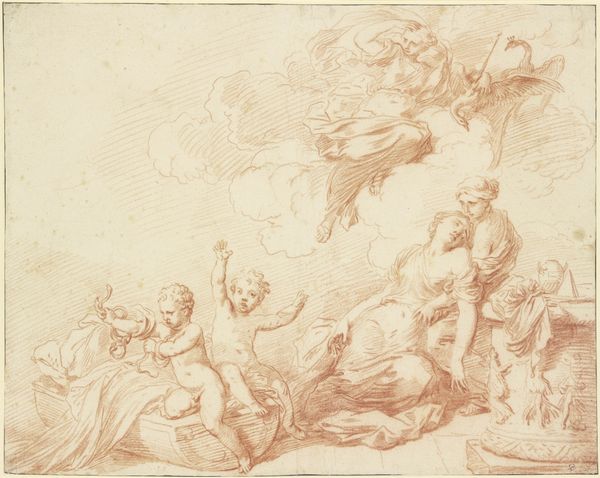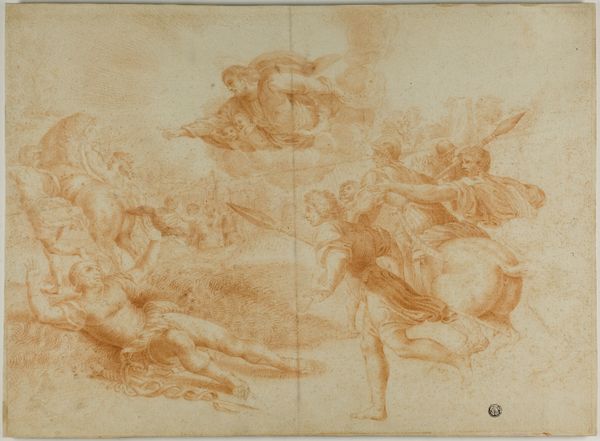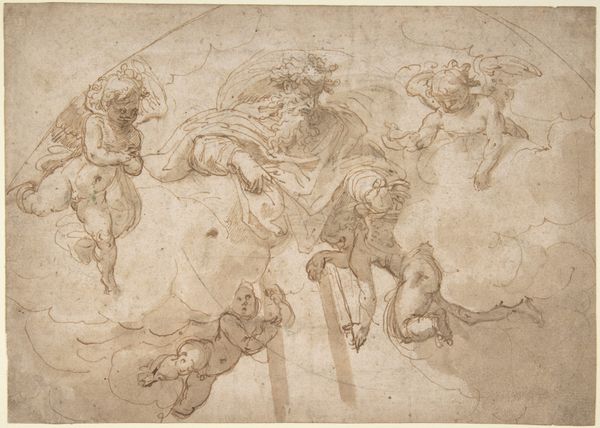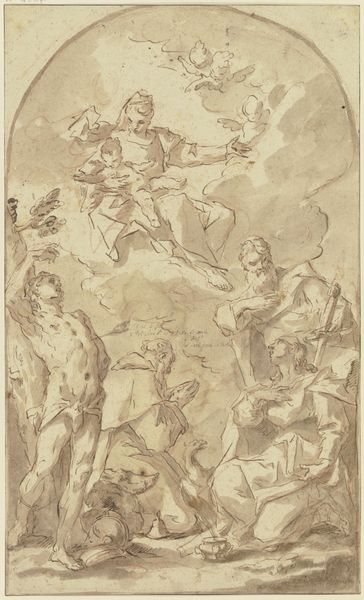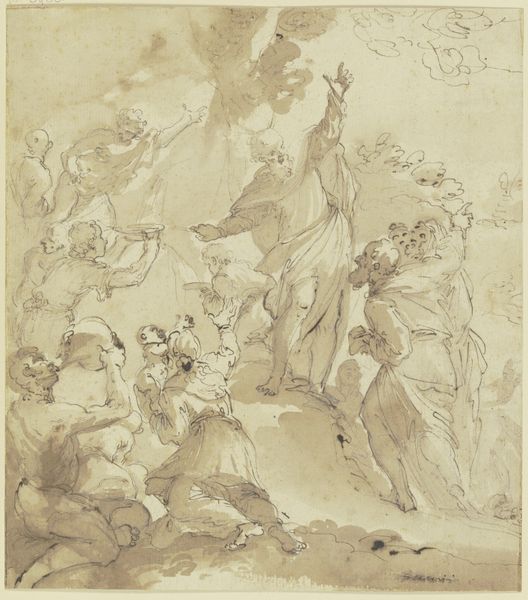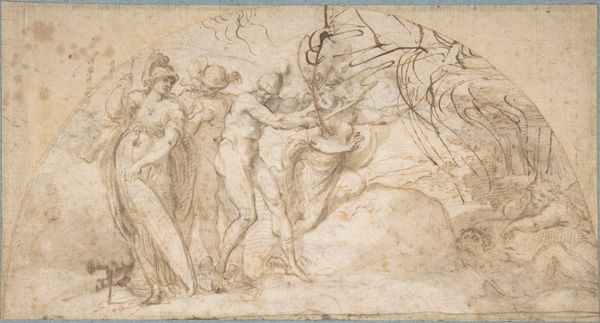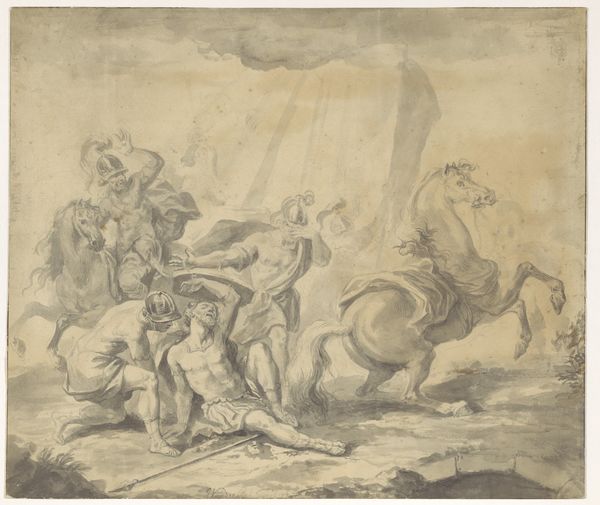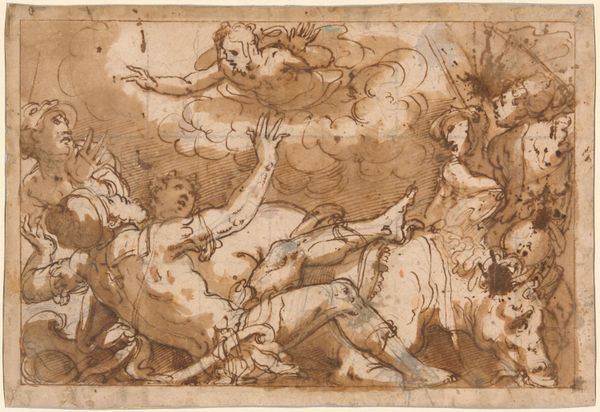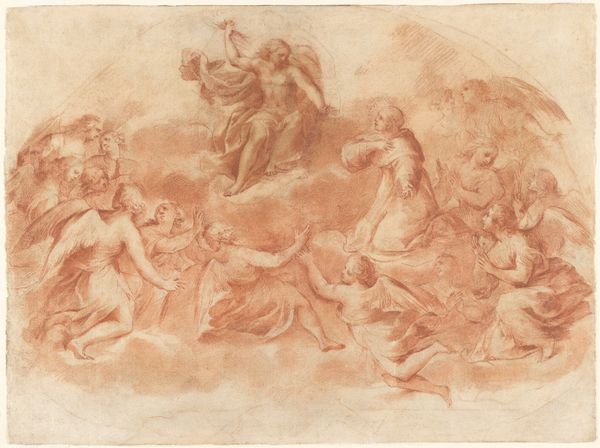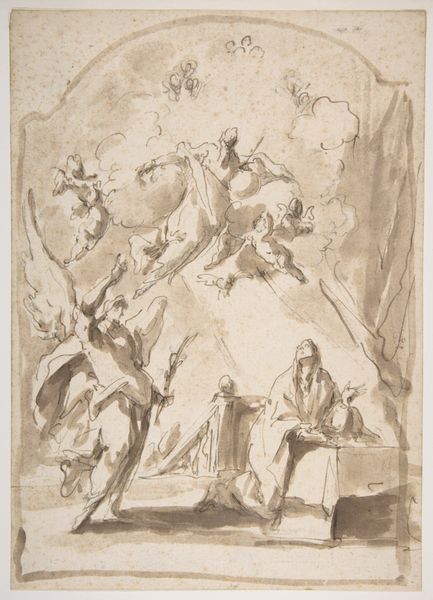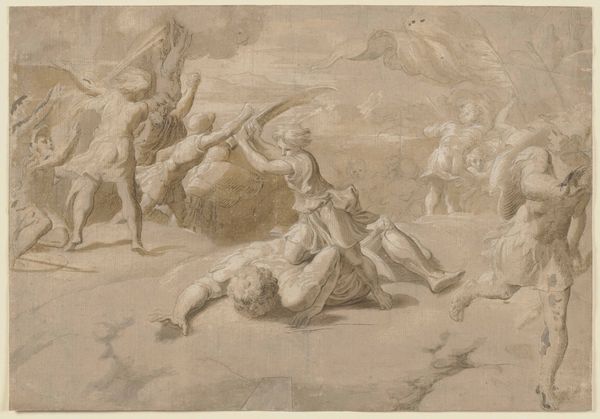
drawing, tempera
#
drawing
#
allegory
#
tempera
#
figuration
#
11_renaissance
#
history-painting
#
italian-renaissance
Dimensions: overall: 30.6 x 42.3 cm (12 1/16 x 16 5/8 in.)
Copyright: National Gallery of Art: CC0 1.0
Editor: This intriguing tempera drawing is "A Sacrifice to Pan," crafted around the early 1630s by Andrea Sacchi. The figures seem to be emerging from the paper itself! What’s fascinating is that Sacchi made preparatory drawings as finished works. How should we look at this work? Curator: Through a materialist lens, we must consider the context of artistic production during Sacchi’s time. The deliberate use of tempera suggests a conscious choice—perhaps intended to mimic frescoes in its effect and link drawings with mural art prestige. Editor: So, even the *choice* of tempera carries meaning beyond just practicality? Curator: Exactly! What kind of paper would it have been executed on? Was that paper readily accessible? The drawing is not the final product here: how did studio assistants respond to Sacchi’s drawings? How were they circulated among workshops to become blueprints? We must remember drawing was a critical medium for knowledge production in workshops. How did these drawings materialize into other artworks, and affect viewership or workshop hierarchies? Editor: I never thought about it that way. So, by exploring the material aspects of Sacchi’s art, you’re essentially unraveling the labor practices of 17th century artists? Curator: Precisely. This enables us to understand better the socio-economic structure behind its creation. What appears to be just 'a drawing' unpacks its production, reception, and enduring value within culture and the studio itself. Editor: Thinking about the 'behind-the-scenes' manufacturing brings new life to art pieces like "A Sacrifice to Pan". Thanks for clarifying that perspective!
Comments
No comments
Be the first to comment and join the conversation on the ultimate creative platform.
